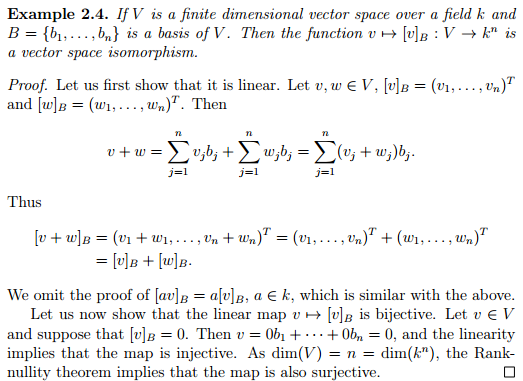
At the last step, we have that $\dim (V) = n = \dim(k^n)$, so the rank nullity theorem gives that $\dim(Im(T)) + \dim(Ker(T)) = n$ but how does this give that $T$ is surjective? I understand that if we show that $\dim(Im(T)) = n$ then seeing as $T$ is injective we can conclude it is surjective, but I don't know how the rank-nullity theorem gives that $\dim(Im(T)) = n$
Best Answer
HINT: $Im(T)$ is a linear subspace of $k^n$ that has dimension $n$, which is equal to the dimension of $k^n$. Use that every basis for a linear subspace can be extended to a basis for the whole space.
PS: Remember that the rank nullity theorem states that $\dim(Im(T)) + \dim(Ker(T))=\dim(V)$.
PS': Since $T$ is injective, $ker(T)=\{0\}$. Since the dimension of the zero linear subspace is $0$ (why?), you have $\dim (ker(T))=0$.